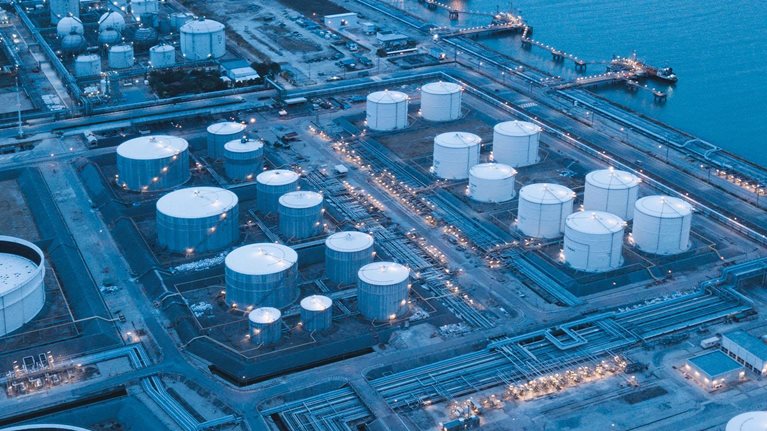The US shale industry has moved through two distinct eras of transformation, and it is now entering a third. After years of rapid growth and a sharp focus on cash, the industry’s boldest chapter may be unfolding, defined by unprecedented scale, geologic uncertainty, macro volatility, and accelerating innovation.
Thriving in this new era will be all about leveraging scale: transforming operations and supply chains, elevating and integrating commercial strategies for an increasingly dynamic market, and reimagining organizations for a new way of operating.
Taking stock of the new reality
Scale is the most prominent feature of this new era, following continuous growth in output from shale over the last 15 years1 and the M&A wave of 2023–24.2 In the United States, 8,000 horizontal wells are drilled each year (adding to the US total of more than 180,000). Subsequently, water production is increasing exponentially and operational and infrastructure complexities are intensifying.3
However, even while significant scale is being achieved, operators are confronting the reality that Tier 1 locations (drilling locations with the best geology) are declining. This is evidenced by the fact that most wells drilled in 2024 were child wells, which often show lower capital efficiency than their parent counterparts.4 Additionally, gas-to-oil ratios (GOR) are trending relentlessly upward—for example, 44 percent of Wolfcamp A wells drilled in Delaware after 2021 had a GOR of more than 3,000 standard cubic feet of gas per barrel of oil, a rate which has doubled from the previous decade.5 By simple measures, all basins are now past their peak of total capital efficiency (Exhibit 1), with finite rig-years of Tier 1 inventory in sight (Exhibit 2), based on current technologies and cost profiles.
By simple measures, all basins are now past their peak of total capital efficiency, with finite rig-years of Tier 1 inventory in sight.


The macroeconomic outlook is another source of uncertainty. McKinsey modeling suggests that trade barriers could increase breakeven prices for new wells by 10 percent, while outlooks for oil prices in 2026 have been highly turbulent over the past three months.6
The pace of technological innovation, which is even more vigorous today than it was during shale’s early growth period, could counteract these headwinds. For example, lateral lengths which pushed the envelope only five years ago are now routine (Exhibit 3), and horseshoe wells will soon be commonplace. Together, scale and technology are creating the conditions for a substantial drop in breakevens, similar to the 30 to 40 percent drop that occurred over the 2014–18 period.7 This could transform today’s Tier 2 or Tier 3 locations into tomorrow’s Tier 1, and rejuvenate mature areas, for example, Rockies, Eagle Ford, and Bakken.

If breakevens reduce by only 30 percent over the next five years, approximately 60,000 locations currently classified as Tier 2 ($40 to $50 per barrel of oil equivalent [BOE] breakeven) could achieve the same breakevens as today’s Tier 1—less than $40/BOE, in the absence of inflationary pressures.8 This could increase the overall Tier 1 count by 150 percent. A range of innovations, such as horseshoe wells and other next-generation designs, frac efficiency gains such as trimulfrac, and other novel breakthroughs yet to be developed, could all contribute to this movement, alongside the cost efficiencies coming from expanded scale.
Together, scale and technology are creating the conditions for a substantial drop in breakevens, similar to the 30 to 40 percent drop that occurred over the 2014–18 period.
Delivering the next S-curve of performance and cost
The pace at which today’s Tier 2 becomes Tier 1 is uncertain, but what we do know is that those who can make pushing the operational envelope a business-as-usual practice could get ahead of the competition and lengthen their inventory runways. All facets of field operations offer advantages of scale, including development, production operations, maintenance, logistics, and supply chain, with potential for compounding efficiency gains (versus companies that focus on only a few priority areas).
For example, one operator made it a priority to use its expanded scale as a catalyst to rethink operational limits (Exhibit 4). This operator leaned heavily into remote operating centers to streamline field operations and set high targets for drilling and completions performance and production downtime, areas where they were already basin leaders. By simultaneously pulling value levers across capital expenditure, operational expenditure, production, and pricing, this operator was able to reduce breakeven by 25 percent across inventory, build a plan to increase free cash flow by 40 percent, and prolong its Tier 1 inventory runway by approximately two years.
Operators that can make pushing the operational envelope a business-as-usual practice could get ahead of the competition and lengthen their inventory runways.

More specifically, the supply chain function can help operators to capitalize on scale in the current environment of tariff-related cost pressures, guided by three considerations:
- Supply chain functions can serve as value centers (instead of cost centers). Companies are shifting away from a cost center mindset by empowering the supply chain function with resources and a voice in decision-making to fully capitalize on new scale. Practices such as should-cost modeling, scenario-based demand modeling, and strategic spot-versus-term balancing have helped leading organizations reduce costs and enhance resilience.9 The topic of water management in the Permian is a timely example, where leading operators are rethinking the water value chain to enable value creation, beyond simply avoiding disposal costs.
- Total cost of ownership (TCO) can serve as the North Star. Operators are moving beyond upfront costs to consider long-term factors such as maintenance, efficiency, and reliability. Historically, cost-focused operators have been hesitant to consider performance-based structures or long-term agreements that align incentives with service providers, but leading operators are rethinking this paradigm to create value at scale.
- Analytics or AI can be embedded into supply chain workflows. Operators are using digital tools, such as AI-driven contract monitoring, to detect leakage points and source-to-pay optimization to build smarter, more resilient operations.
Doubling down on commercial integration
Oil and gas production in the United States has outpaced the infrastructure needed to get products to market, increasing the premium for those who control these flows. This is especially true for gas, due to the large interconnected global market for liquefied natural gas, and exacerbated by the global data center industry increasingly looking to gas as a source of energy.10
Operators are therefore seeking more control over paths to market, both to protect their access and to capture the arbitrage of price dislocations that have become more frequent as volatility grows (Exhibit 5). The increase in midstream consolidation ($180 billion worth of deals in the last three years) speaks to this trend, as midstream organizations rush to maximize their share of this value pool.11

Operators can stick to the status quo of the traditional exploration and production (E&P) model—that is, focus on optimizing production and cede commercial margins to third parties—but they risk falling behind their peers who are adapting for the new era. Sophisticated operators are integrating information flows into their commercial approach to optimize their entire system, either through increased midstream participation, enhanced marketing and trading capabilities, or both—and the right mix will vary for each portfolio (Exhibit 6). For some operators, this entails a partial return to the first era of shale, when early companies were more integrated with midstream to ensure a path to market. These early companies largely exited during shale’s second era to focus on upstream cash flow optimization.

Price/cost discovery is just one example of the many ways that information flows can be used to optimize systems. This can be achieved through contracting mechanisms, trading functions, or full midstream participation. Those who successfully transform their commercial approach typically see a 3 to 8 percent netback increase (across both pricing and cost)—presenting a very real advantage over peers who are not seizing this opportunity.12
Operators can stick to the status quo of the traditional E&P model—that is, focus on optimizing production and cede commercial margins to third parties—but they risk falling behind their peers who are adapting for the new era.
Rewiring for scale
The scale and uncertainty that characterize shale’s new era necessitate operating models fundamentally different than those that have been inherited. The ability to rewire organizations to meet these new conditions will likely be a differentiating factor. The trick will be to take advantage of scale to drive efficiency, while retaining the nimbleness needed to succeed in field development, where complexity will only grow. Of course, this is easier said than done. In the previous era, shale companies successfully reorganized to prioritize cash following extensive production growth, which is a transition common to growing enterprises across all industries. But the current challenge of leveraging a new level of oil field scale is in many ways uncharted territory.
Due to the wide array of portfolio types and sizes, there will be no silver bullet for organizational redesign in the new era. However, the operators that succeed will be those who understand the value centers of their portfolio and build organizations to deliver efficiency at scale across them. Typical value centers include portfolio strategy, field development, production management, and midstream or commercial, with each needing its own capabilities and the right balance of functional versus asset-centric decision-making.
One common theme, regardless of portfolio, will be the importance of standardized workflows to drive efficiency at scale. For some lean E&Ps, standardization will be new to their nimble approach, but many are discovering the importance of consistency in execution across larger portfolios. To create value, standardized workflows must be simple and streamlined. AI may play an increasing role here; although many oil and gas use cases are nascent, the next ten years could see a steady increase in the adoption of AI for key workflows across sectors.13 Operators can future-proof their organizations for these shifts by cleansing and organizing their data and linking to workflows, developing a digital capability-building plan that reaches across the enterprise, and creating a governance framework to manage ethical, legal, and regulatory risks associated with AI adoption.
The current challenge of leveraging a new level of oil field scale is in many ways uncharted territory.
The next chapter of the shale revolution will be fundamentally different from the previous ones, with a new set of complexities and opportunities. The ability to adapt to this new reality will determine which organizations can successfully scale.

